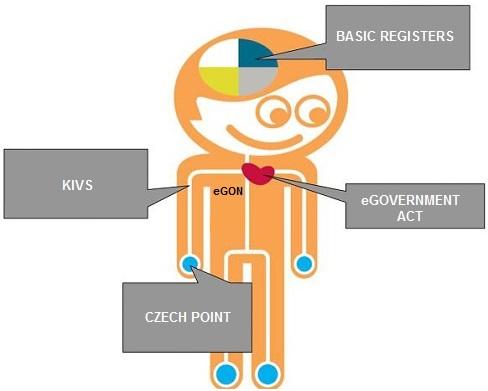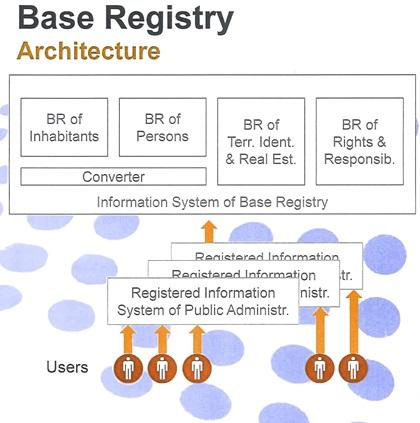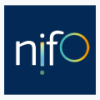eGON is the Czech overarching framework which structure and integrate all the eGovernment initiatives and the enforcement of electronic communication in the country.
It targets exchanges linking public authorities the ones with the others, or linking public authorities with citizens. It has been conceived in Czech Republic and its development is a direct contribution to some European projects in the domain of harmonised eGovernment services (e.g. STORK or eIDAS, see below).
EIF and Interoperability matching
The projects gives a concrete response to much of the principles of the new European Interoperability Framework (EIF). A particular interest is raised for what concerns the organisational interoperability and the governance aspects: the roles & responsibilities for each eGON initiatives and projects are clearly assigned to administrative levels and sectors.
Policy Context
The first Czech national e-government strategies were approved by the government back in 1999. A renewed framework has been adopted in 2007, when the basis of the eGON approach have been set up. The adoption of the new eGovernment Act in 2010 is the legal framework under which the eGON project is developed.
The “Strategic Framework for the Development of Public Administration in the Czech Republic for 2014 -2020” has been approved in 2014. Implementation plans translate the strategy into concrete initiatives, including the e-government approaches that are now included in the whole eGON system.
Description of target users and groups
The eGON “approach” intends to facilitate the administrative procedures of all the citizens of Czech Republic. As a side impact, civil servants of the national public authorities need to be properly educated and trained on new technologies. This is a must in order to satisfy the different kind of administrative requests submitted by citizens. But the main target keeps on being the whole citizenship.
Being the competent institution for eGov topic, the Ministry of Interior defines the entire eGON framework, is in charge of managing corresponding projects (see list below) and is responsible for their correct implementation. More precisely, a specific Office of eGovernment Chief Architect supervises and monitors the different parts of the eGON structure.
As introduced in the governmental website, Smart Administration Strategy should improve the quality of service provided by government agencies to their clients (e.g. to citizens, companies and other governmental agencies). Smart Administration is at the crossroad of six converging and complementary factors: citizens, legislation, organisation, civil servants, finance and information technology.
Description of the way to implement the initiative
The whole eGON is composed of multiple projects deployed according to a clear director plan.
-
The first milestone is the creation of Czech POINT, an acronym meaning Czech Filling and Verification Information National Terminal. This is a network of assisted public administration centres where each citizen can obtain all the information regarding the personal data owned by the State in its central base registries.
It responds to the wish of administrative simplification (EIF Rec. 17) and user centricity (EIF Rec. 11) for the whole citizenship. Reference data are edited through the authoritative information system, and the surrounding systems access it in a read mode. Base registries are not only guarantor for having a unique value for reference data, they also ensure a unique point of edition for this data.
- The second milestone is KIVS – the public administration communication infrastructure. It implies, to every level of public administration, the mandatory participation to the modernisation of the communication network. This is organised through a dedicated intranet, optimising the quality of the service for the citizens and improving the efficiency and effectiveness of the whole system of public services (EIF Rec. 19).
-
Then comes the eBoxes project: this electronic data boxes system is run by the Czech Post. It facilitates communication of public authorities because it is faster, cheaper and more secure than classical postal mail. Authorities must communicate with business enterprises using data boxes. In the other way round, business enterprises and citizens can use their data boxes to apply for permissions, approvals or licences.
They participate to enhancing the user-centricity (EIF Rec. 11) and administrative simplification (EIF Rec. 17) of Czech public services.
-
The legal framework reform, especially the eGovernment Act, modernises and sets up the vision for the future of the ICT domain in Czech Republic.
The modernisation of the system is performed on every aspect of the interoperability, especially for what concerns the respect of the whole principles of interoperability and the application of the governance across the several sectors of the public administration.
- The creation of Base registries, a unique solution to centralise and keep up to date the most common and widely used information, as a part of eGovernment and Smart Administration strategy of Czech government according to the criteria designed in the conceptual model of the EIF.
A metaphor helping to understand the eGON ecosystem depicts it as a human body composed by its different milestones:
- Czech POINT (the fingers)
- KIVS (the veins)
- eBox/Databox system (the blood)
- Legislation changes (the heart)
- Base Registries (the brain)

Technology solution
Depending on the addressed eGON project, one or another technological solution is adopted. Thorough work has been performed, for example, concerning the privacy and reuse of data. This is of first importance since the open source application is the favourite solution, according to openness and reusability principles that are listed as references in the Czech national framework and Interoperability factsheet. One of the main examples addresses the Base registry system. This is centralized point where to insert, store and optionally convert all the relevant data of the citizens, guaranteeing the privacy according to the relevant laws on data protection. The input is based on the need of secure data interchange between thousands of information systems of public administration. Base registries contain reference data about inhabitants, companies, building. Other information systems being part of the Czech public administration ecosystem access and reuse these reference data, when carrying out their own processes.

Main results, benefits and impacts
The benefits of the entire eGON approach are both local and global.
Looking to the local point of view, several eGON initiatives are adopted by the municipalities and relevant nearest authorities. As listed hereunder, some of these concrete examples create direct benefits such as:
- Regional networks interconnection and local service centres: ensured by the Ministry of Interior according to the KIVS intranet to faster fulfil the citizens application request for information;
- Czechpoints front offices: a network of contact points where citizens can request extracts from public and non-public registries. They can also registers themselves and submit request to the state administration;
- Public services digital map: to facilitate the orienteering of the citizens throughout the different public (also regional and local) services. This also include some open application such as cadastral maps, territorial planning and analytical documents that the citizens can consults from their home or workplace.
Document management systems to archive all the relevant information once and in the proper and harmonized way for the efficiency of the civil servants and for a better service to the citizenship.
Czech Government also ensures that, taking for granted the many positive reactions he received related to the eGON project, its principles and implementation approach is helpful to accompany similar initiative run by other countries or even at European level.
As a specific and concrete example, it gave an input to implement a part of the STORK project, aiming to establish a European eID Interoperability Platform that allow citizens to establish new e-relations across borders, just by presenting their national eID. Service providers also become connected to the platform thereby increasing the number of cross-border services available to European users. The adoption of eIDAS in EU regulation (that follows several rules already enforced by eGON), is another example that is aligned with the concepts of the eGON approach.

